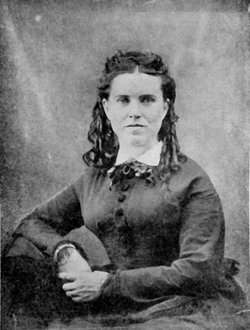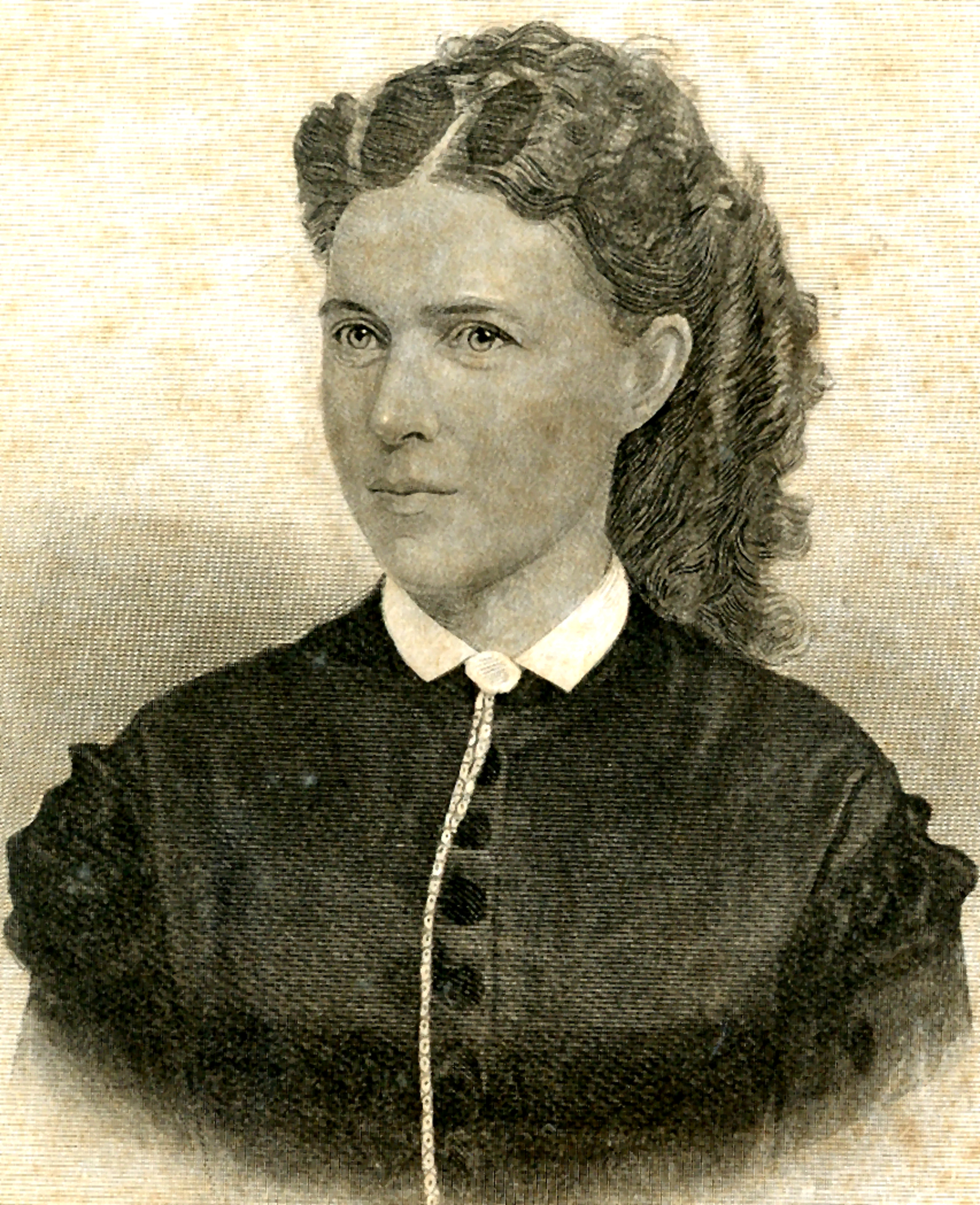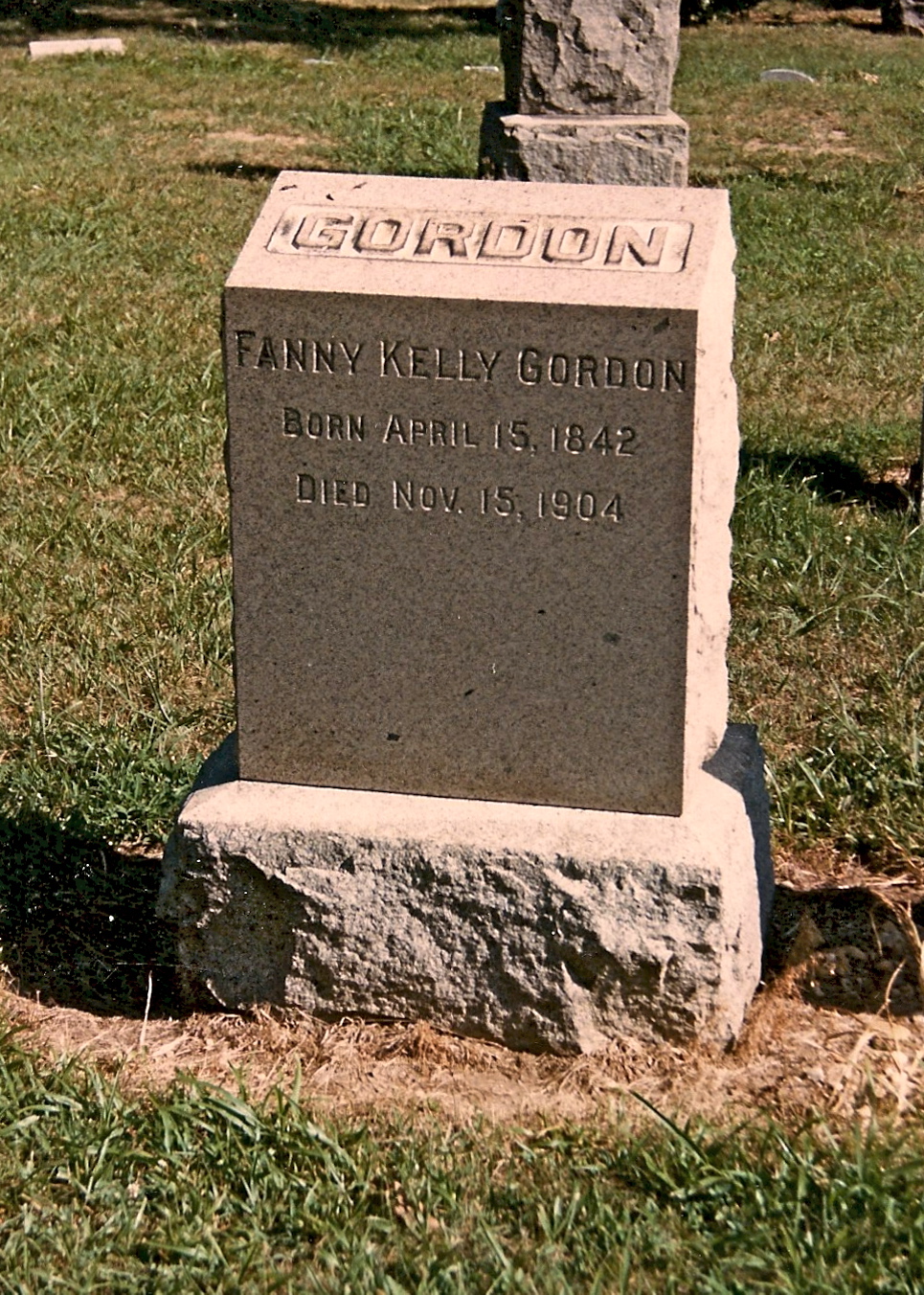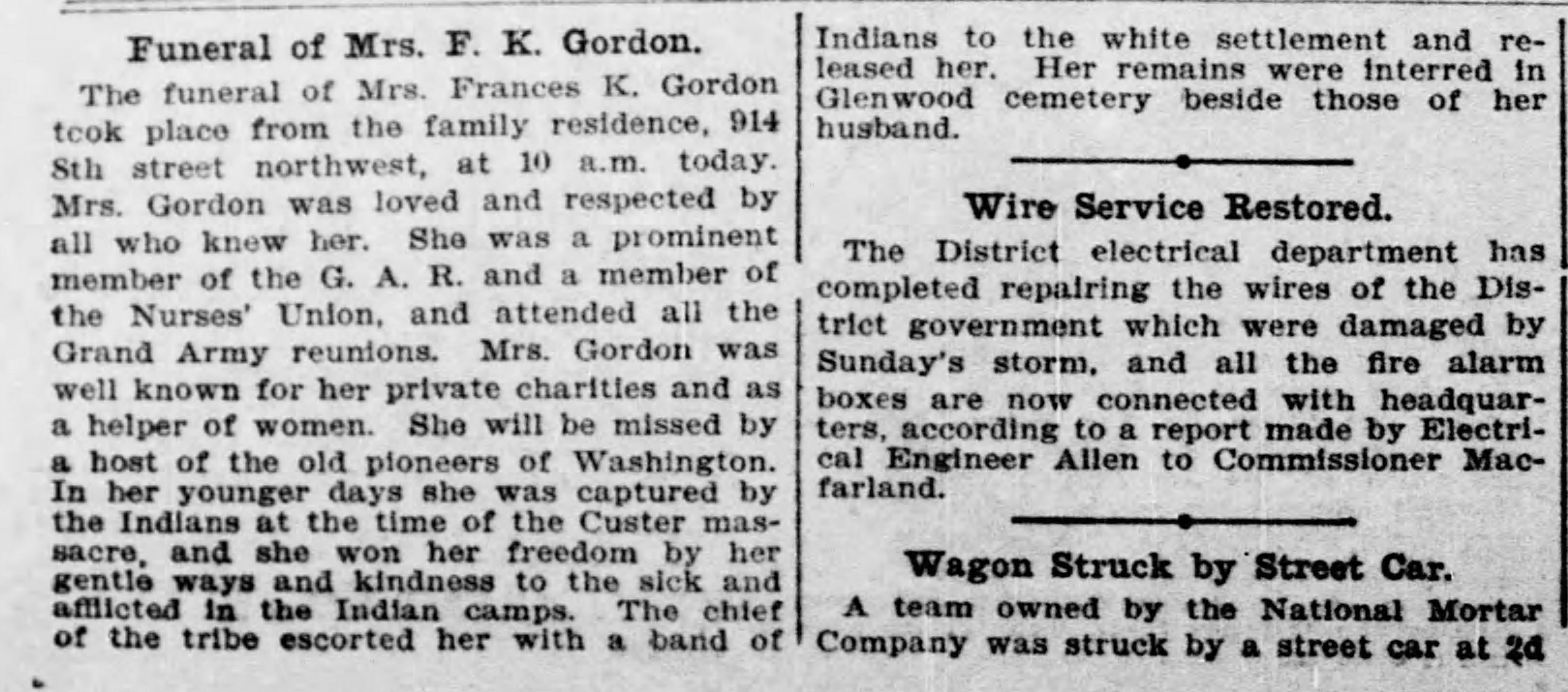-------------
Fanny Wiggins Kelly, western immigrant and author of the book "Narrative of my Captivity among the Sioux Indians". Born in Ontario, Canada, Fanny's family moved to Kansas in 1856. Married in 1863 to Josiah Kelly, a farmer and discharged Union Army soldier. In April of 1864, the Kellys decided to move west to Idaho. Along with their adopted daughter Mary and their two negro servants Andy and Franklin, they joined a small wagon train consisting of William and Sarah Larimer and their son Frank, a Methodist minister named Sharp, a Mr. Gardner Wakefield, and Noah Taylor. Deciding against the safety of joining with a larger wagon train, they began their journey to Idaho in May of 1864 with only six wagons, not knowing that their trip was occurring during the same time frame as General Sully's campaigns against the Sioux indians, which was causing great anger and hostility among the various Sioux tribes. On about July 12th, Fanny's wagon train met with a party of about 250 Sioux warriors near Box Elder Creek, Wyoming. At first claiming to want only food and to trade, the Souix, lead by a chief named Ottowa, attacked the wagons, killing Sharp, Taylor, and Franklin, wounding Larimer and Wakefield, and taking Fanny, Mary, Sarah Larimer and her son Frank captive. Within two days, Sarah and her son had escaped. Fanny, in an attempt to free her daughter Mary, dropped her along the trail with instructions to make her way back to the other survivors of the attack, following a trial of pieces of paper that Fanny had been leaving since their capture. Her efforts to save her daughter were to prove futile, as Mary's mutilated remains, pierced by arrows and scalped were discovered by soldiers three days later. Fanny would remain a captive for 5 months, during which time her status would vary between abused servant to honored guest and back again, depending on the mood of her captors. She was traded from chief to chief, even spending time as a captive in the lodge of Sitting Bull, where she reported being "treated as an honored guest". Fanny was eventually traded to a band of Blackfoot warriors who turned her over to white traders at Fort Sully in the Dakota Territories, where she was reunited with her husband who had been searching for Fanny since her capture. Her book, "Narrative of my Captivity Among the Sioux Indians" first published in 1871, was popular reading, combining tragedy and drama in the setting of the Old West. Fanny became a popular speaker, a member of the women's branch of the Grand Army of the Republic, and a government employee. Fanny Kelly died at her home in Washington DC of a cerebral hemorrhage.
∼Evening Star November 17, 1904
She was said to have been captured and released by Indians around the time of the Custer massacre.
-------------
Fanny Wiggins Kelly, western immigrant and author of the book "Narrative of my Captivity among the Sioux Indians". Born in Ontario, Canada, Fanny's family moved to Kansas in 1856. Married in 1863 to Josiah Kelly, a farmer and discharged Union Army soldier. In April of 1864, the Kellys decided to move west to Idaho. Along with their adopted daughter Mary and their two negro servants Andy and Franklin, they joined a small wagon train consisting of William and Sarah Larimer and their son Frank, a Methodist minister named Sharp, a Mr. Gardner Wakefield, and Noah Taylor. Deciding against the safety of joining with a larger wagon train, they began their journey to Idaho in May of 1864 with only six wagons, not knowing that their trip was occurring during the same time frame as General Sully's campaigns against the Sioux indians, which was causing great anger and hostility among the various Sioux tribes. On about July 12th, Fanny's wagon train met with a party of about 250 Sioux warriors near Box Elder Creek, Wyoming. At first claiming to want only food and to trade, the Souix, lead by a chief named Ottowa, attacked the wagons, killing Sharp, Taylor, and Franklin, wounding Larimer and Wakefield, and taking Fanny, Mary, Sarah Larimer and her son Frank captive. Within two days, Sarah and her son had escaped. Fanny, in an attempt to free her daughter Mary, dropped her along the trail with instructions to make her way back to the other survivors of the attack, following a trial of pieces of paper that Fanny had been leaving since their capture. Her efforts to save her daughter were to prove futile, as Mary's mutilated remains, pierced by arrows and scalped were discovered by soldiers three days later. Fanny would remain a captive for 5 months, during which time her status would vary between abused servant to honored guest and back again, depending on the mood of her captors. She was traded from chief to chief, even spending time as a captive in the lodge of Sitting Bull, where she reported being "treated as an honored guest". Fanny was eventually traded to a band of Blackfoot warriors who turned her over to white traders at Fort Sully in the Dakota Territories, where she was reunited with her husband who had been searching for Fanny since her capture. Her book, "Narrative of my Captivity Among the Sioux Indians" first published in 1871, was popular reading, combining tragedy and drama in the setting of the Old West. Fanny became a popular speaker, a member of the women's branch of the Grand Army of the Republic, and a government employee. Fanny Kelly died at her home in Washington DC of a cerebral hemorrhage.
∼Evening Star November 17, 1904
She was said to have been captured and released by Indians around the time of the Custer massacre.
Bio by: Steve Niederloh
Family Members
Sponsored by Ancestry
Advertisement
See more Kelly Gordon or Wiggins memorials in:
- Glenwood Cemetery Kelly Gordon or Wiggins
- Washington Kelly Gordon or Wiggins
- District of Columbia Kelly Gordon or Wiggins
- District of Columbia Kelly Gordon or Wiggins
- USA Kelly Gordon or Wiggins
- Find a Grave Kelly Gordon or Wiggins
Records on Ancestry
Advertisement











